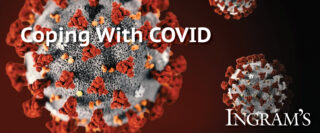HOME | ABOUT US | MEDIA KIT | CONTACT US | INQUIRE
HOME | ABOUT US | MEDIA KIT | CONTACT US | INQUIRE
As experts study COVID-19, new information comes out almost daily, changing guidance on how to stay safe.

“The information is coming much quicker than it might have prior to COVID,” said Dr. Mark Steele at Truman Medical Center.
Since the pandemic started, experts have been studying coronavirus and a possible vaccination.
“It’s definitely not going away, so as much as we’d all like it to be gone, it’s still here,” said Dr. Sarah Boyd with Saint Luke’s Health System.
With updated information comes updated guidelines. The Centers for Disease Control and Prevention (CDC) recently updated its guidance on close contacts.
“The guidelines, these kind of things are not an absolute perfect science, they’re not black and white and they’re sort of the best knowledge that we have and kind of the best guidelines that we can bring to bare,” Steele said.
Originally, a person who spent 15 consecutive minutes with an infected person was considered a close contact. Now, the CDC says a person who is within 6 feet of someone with COVID-19 for a total of 15 minutes per day can be infected. That includes multiple and brief encounters, even one or two minutes at a time.